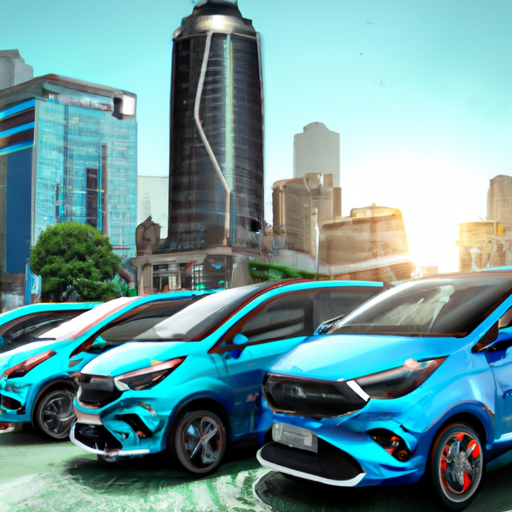Zimbabwe’s national statistics agency, Zimstat, has released its latest Transport Statistics Report for the 2nd Quarter of 2023. According to the report, light motor vehicles (up to 2,300 kg) make up 76.5% of the 1,583,700 registered vehicles in the country as of June 30, 2023. With a population of approximately 16 million people, this data provides insights into the vehicle landscape in Zimbabwe.
The Evolution of Light Vehicle Registrations in Zimbabwe
The Transport Statistics Report also includes annual vehicle registration data since 2018 for different vehicle segments. The light vehicle segment, which accounts for almost 80% of the registrations in Zimbabwe, has shown interesting trends over the years.
A chart highlighting the changes in this segment from 2018 shows a dip in registrations in 2020, attributed to the COVID-19 pandemic. Additionally, there was a slowdown in registrations in 2019 likely due to economic challenges in the country. However, registrations have been picking up since 2022. Based on the sales in Q1 and Q2 of 2023, it appears that registrations will continue to grow this year, as 34,085 light motor vehicles have been registered in the first 6 months.
Interestingly, around 95% of these vehicles are imported as 8-year-old used vehicles from Japan and the United Kingdom. Furthermore, 99% of them are still Internal Combustion Engine (ICE) vehicles. Many consumers finance these purchases through small loans from banks paid over 3 years, while others save up and pay cash. After using these vehicles for about 5 years, they are often resold in the local used vehicle market, making them approximately 13 years old. As these vehicles experience the challenges of local roads, they may be in worse condition compared to their original markets in Japan and the UK.
The Popular Light Vehicle Models and Common Issues
A significant portion of the imported light vehicles in Zimbabwe are small hatchbacks such as the Honda Fit plugless hybrid and the Toyota Aqua, both of which are plugless hybrids. These vehicles are imported from Japan and sold locally for around $9,500 USD. Other popular models include 8-year-old Toyotas, Mazdas, and Hondas, starting at approximately $17,000.
However, some of these imported cars may have issues upon arrival, as expected from 8-year-old ICE vehicles. For example, gearbox problems have been reported by several buyers, leading to costly repairs. Another common issue is related to the hybrid vehicles’ batteries, with cases of degraded cells or other battery pack problems. To address this, an emerging network of mechanics offers services such as testing battery packs and replacing faulty cells or the entire battery pack.
The Potential for Small EVs in African Markets
The challenges associated with owning and maintaining 8-year-old vehicles in Zimbabwe may present an opportunity for the new generation of small Electric Vehicles (EVs) that are emerging in China. Zimbabwe serves as an example, with an average import of 66,209 light motor vehicles in recent years. By considering other African markets like Tanzania, Zambia, Kenya, and Ghana, a substantial addressable market for competitively priced brand-new small electric vehicles is evident.
Models such as the Wuling Bingo and BYD Seagull could disrupt the sector and catalyze the transition to electric vehicles. If these EVs were priced between $15,000 to $20,000 (including import duties, taxes, and local assembly dynamics), they could revolutionize the automotive sector in Africa. Innovative financing models may be necessary to increase the customer base. Considering the lower operational and “fueling” costs associated with EVs, choosing a brand-new electric car at around $15,000 over a $10,000 8-year-old ICE vehicle seems like an attractive option for consumers in this price-sensitive segment. Currently, viable Battery Electric Vehicles (BEVs) are lacking in these African markets, making the introduction of Chinese players like SAIC-GM-Wuling JV and BYD crucial.
About the BYD Seagull and Wuling Bingo
The BYD Seagull, launched earlier this year in China, starts at 73,800 yuan ($10,690). This compact hatchback features a 30.8 kWh battery and is based on BYD’s e-platform 3.0. With a single electric motor offering 75 hp (55 kW) and 135 Nm of torque, it has a top speed of 130 km/h. The Seagull is equipped with two Blade battery options, providing ranges of 305 km and 405 km (CLTC) respectively. Fast charging capabilities allow the battery to reach 80% capacity in just 30 minutes.
Another promising vehicle is the Wuling Bingo, developed through the SAIC, GM, and Wuling joint venture. This compact electric vehicle measures 3950/1708/1580 mm with a wheelbase of 2560 mm. The Bingo offers two motor options, 30 kW (41 hp) and 50 kW (68 hp), with battery versions of 17.3 kWh and 31.9 kWh respectively. Their range ratings are 203 km and 333 km. The starting price of the Wuling Bingo in China is less than $9,000.
The emergence of these small EVs presents an exciting opportunity for African markets and potentially other global markets as well. With their affordability and practicality, they could revolutionize the transportation landscape and drive the adoption of electric vehicles.
